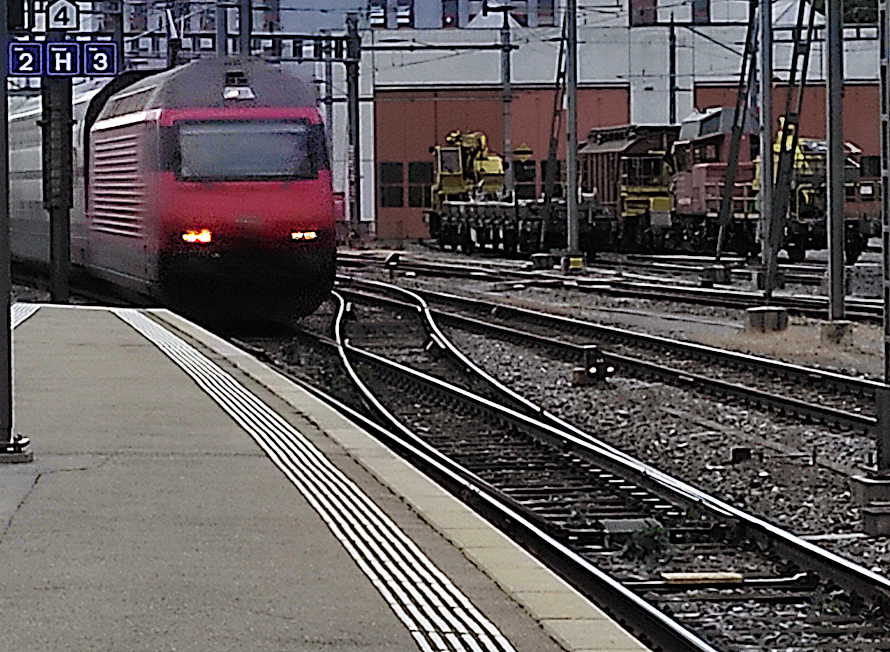Switching time of turnouts in Helvest decoders
Tags: DCC digital (en), GAW400 (en), UPW400 (en)
Comments are closed.
With the increasing use of realistic slow motors to move the railroad points, it becomes important to correctly adjust the switching time of the decoders.
Helvest decoders for turnouts offer the possibility of very precise and also very simple adjustment.
Why is it important to adjust the time?
Even in the prototype the turnouts are a delicate point for the exercise. They require the position of the blades to be precise and locked, and anyway the diverging line leads to a reduced speed. In a slow-running MRR motor, insufficient action time can result in the blades not being able to fully touch the toe. This of course leads to the wrong position of the turnout, with the risk of derailment for the vehicles.
A too long switching time, on the other hand, does not create mechanical problems. However, in some motors it can overstress the circuit if they are not equipped with limit switches that deactivate the motor once it has reached the end of its stroke.

Adjust the time for a Helvest DCC decoder.
There are two ways to set the blade movement time: Set the same time for all the outputs of the Layout Module or set each output separately.
Except in special cases, if you have motors of the same type you do not need to change the time for each different output. The same time is set for all Layout Module outputs.
This is very easy to do using CV #37 and 38:
The CV37 contains the times for all 4 outputs of the Layout 1 module;
The CV38 contains the times for all 4 outputs of the Layout 2 module.
To calculate the time, just remember that the value you enter is multiplied by 2 hundredths of a second. Therefore, the value 100 entered by default corresponds to 2 seconds (100 x 2/100 = 2 seconds).
Other examples of values to be entered in CVs might be:
– 50 for 1 second;
– 200 for 4 seconds;
– 255 (which is the maximum) for 5.1 seconds.
If you prefer to adjust each individual turnout differently, simply do the same thing, but enter the values in the CVs that adjust each individual turnout.
For the four outputs of the Layout1 Module the values are in CV 122, 132, 142 and 152.
For the four outputs of the Layout2 Module the values are in CV 162, 172, 182, 192.
Please note that, as with addresses, writing on general CV 37 and 38 deletes all individual settings!
The decoder helps you to set the time
To better adjust the duration, there is a useful tool on the DCC100 board: the yellow LED marked “status”. This LED lights up while the motor is being powered.
“Status” LED position on the DCC100 board.

So if you want to adjust the time precisely, simply observe what this LED does during the operation:
– does the LED turn off (and then the motor stops) before the blade has reached the end of its movement? Then the switching time must be increased.
– Does the LED stay alight for a considerable time after the blade have reached the end of their movement? Then the switching time must be reduced.
Example of a situation where the drive time (CV value: 100) is too high: the motor switches very quickly and the “Status” LED remains active long after the movement has ended.
The ideal setting is achieved when the LED turns off just after the needle has come into position.
To change the switching time you must of course adjust the CV as indicated above.
Correct time setting: The “Status” LED turns off immediately after the end of the movement.
Simultaneous activation of several switches
Helvest decoders have a peculiarity, that is, if several turnouts are activated at the same time and connected to the same Layout module, they are not simultaneously switched but they move one at a time.
Imagine having four exchanges, numbered from 1 to 4. If you operate all the exchanges in rapid succession (or at the same time, for example, if they are part of an itinerary) they do not switch temporarily, but one after the other.
The decoder stores up to 8 consecutive movements on the same module and executes them in succession.
This functionality has two advantages: it increases the realism of the movement, because in reality the turnouts do not move all together, when an itinerary is made. Furthermore, there is an electrical advantage, i.e. the power required by the motors is spread over time. If you have a non very high power transformer, the simultaneous action of several motors lowers the voltage on the whole system, while in this way there are no peaks in power requirements.
Example of a sequential movement of four “Conrad” motors. The commands are sequential, but the decoder “queues” them and drives them one after the other.
Do you like this article? Please comment or ask questions in our Facebook page, like it or share!